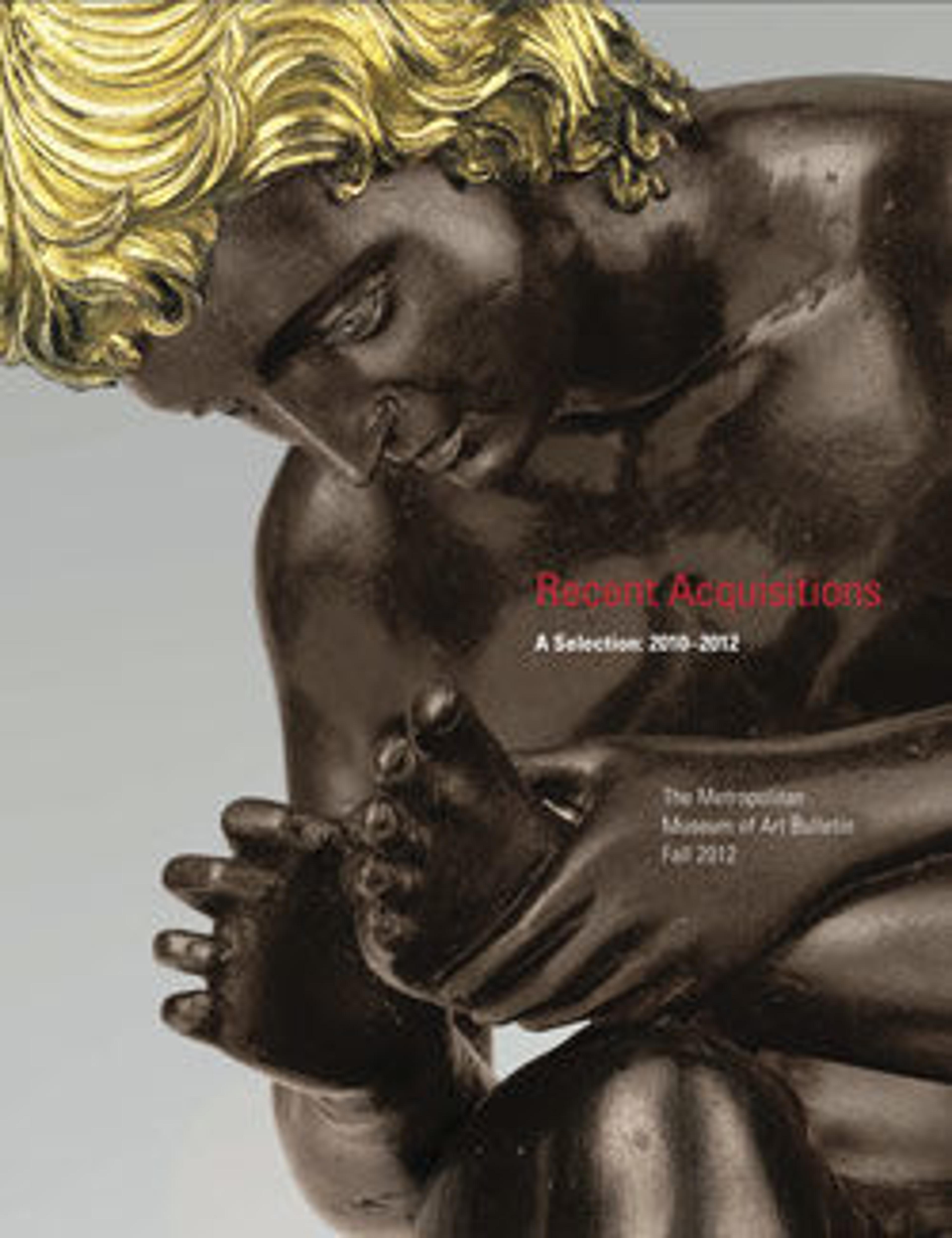Gold box ring surmounted by a scarab
On the underside of the box, kneeling Eros.
From the end of the third millennium B.C., the scarab beetle served as an amulet in Egypt where it represented the sun god. In the Greek world, beginning in the sixth century B.C. it became the predominant type of gem, cut in carnelian and other hard stones. The scarab integrated into a gold ring appears in the fourth century B.C. The articulation of the insect and the embellishment of the box reveal craftsmanship of the highest order.
From the end of the third millennium B.C., the scarab beetle served as an amulet in Egypt where it represented the sun god. In the Greek world, beginning in the sixth century B.C. it became the predominant type of gem, cut in carnelian and other hard stones. The scarab integrated into a gold ring appears in the fourth century B.C. The articulation of the insect and the embellishment of the box reveal craftsmanship of the highest order.
Artwork Details
- Title:Gold box ring surmounted by a scarab
- Period:Classical
- Date:ca. 330–310 BCE
- Culture:Greek
- Medium:gold
- Dimensions:H.: 1 1/4 in. (3.2 cm)
- Classification:Gold and Silver
- Credit Line:Purchase, Schultz Foundation Gift, 2010
- Object Number:2010.226
- Curatorial Department: Greek and Roman Art
More Artwork
Research Resources
The Met provides unparalleled resources for research and welcomes an international community of students and scholars. The Met's Open Access API is where creators and researchers can connect to the The Met collection. Open Access data and public domain images are available for unrestricted commercial and noncommercial use without permission or fee.
To request images under copyright and other restrictions, please use this Image Request form.
Feedback
We continue to research and examine historical and cultural context for objects in The Met collection. If you have comments or questions about this object record, please contact us using the form below. The Museum looks forward to receiving your comments.
